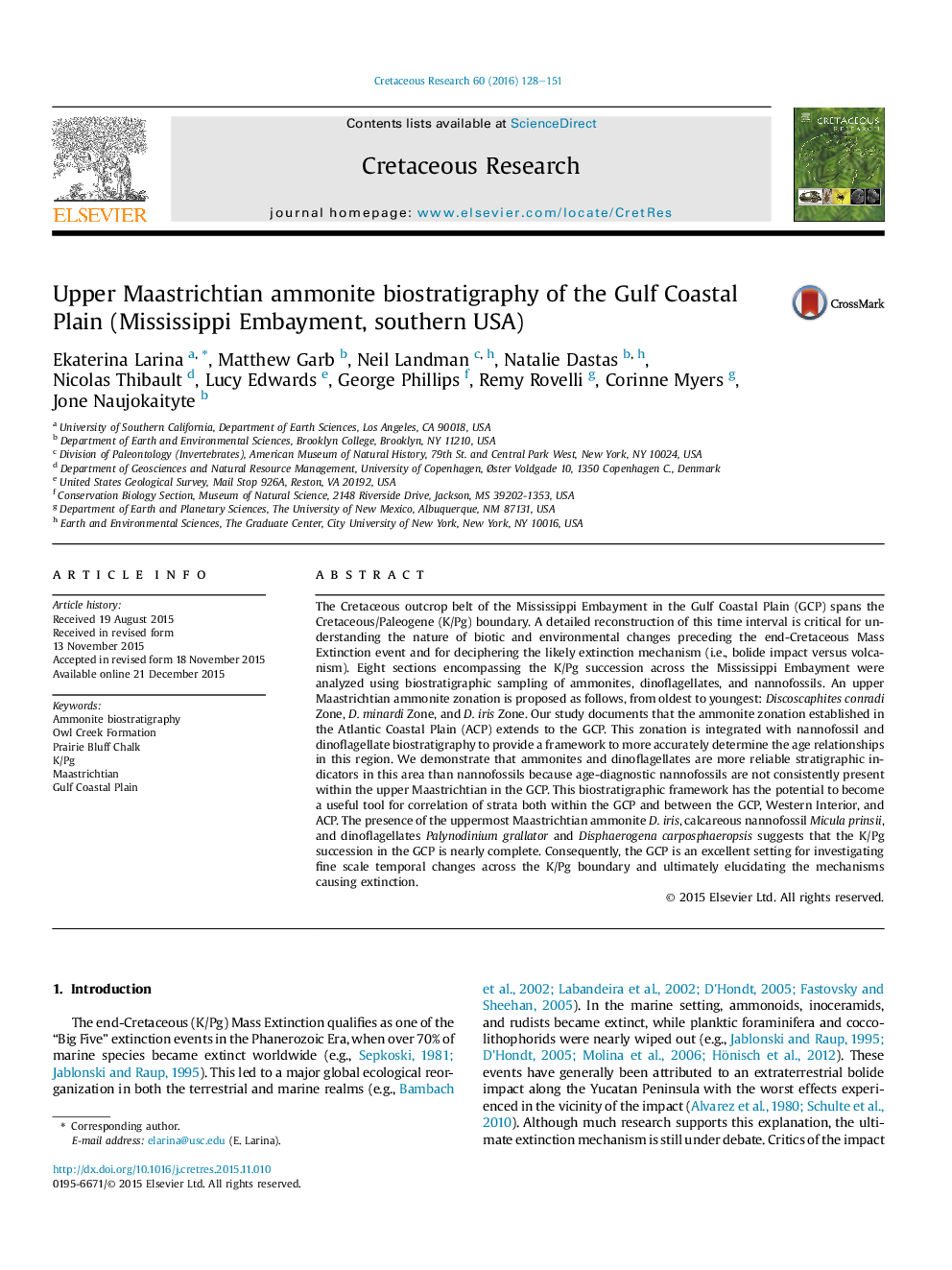| کد مقاله | کد نشریه | سال انتشار | مقاله انگلیسی | نسخه تمام متن |
|---|---|---|---|---|
| 4746769 | 1642063 | 2016 | 24 صفحه PDF | دانلود رایگان |
The Cretaceous outcrop belt of the Mississippi Embayment in the Gulf Coastal Plain (GCP) spans the Cretaceous/Paleogene (K/Pg) boundary. A detailed reconstruction of this time interval is critical for understanding the nature of biotic and environmental changes preceding the end-Cretaceous Mass Extinction event and for deciphering the likely extinction mechanism (i.e., bolide impact versus volcanism). Eight sections encompassing the K/Pg succession across the Mississippi Embayment were analyzed using biostratigraphic sampling of ammonites, dinoflagellates, and nannofossils. An upper Maastrichtian ammonite zonation is proposed as follows, from oldest to youngest: Discoscaphites conradi Zone, D. minardi Zone, and D. iris Zone. Our study documents that the ammonite zonation established in the Atlantic Coastal Plain (ACP) extends to the GCP. This zonation is integrated with nannofossil and dinoflagellate biostratigraphy to provide a framework to more accurately determine the age relationships in this region. We demonstrate that ammonites and dinoflagellates are more reliable stratigraphic indicators in this area than nannofossils because age-diagnostic nannofossils are not consistently present within the upper Maastrichtian in the GCP. This biostratigraphic framework has the potential to become a useful tool for correlation of strata both within the GCP and between the GCP, Western Interior, and ACP. The presence of the uppermost Maastrichtian ammonite D. iris, calcareous nannofossil Micula prinsii, and dinoflagellates Palynodinium grallator and Disphaerogena carposphaeropsis suggests that the K/Pg succession in the GCP is nearly complete. Consequently, the GCP is an excellent setting for investigating fine scale temporal changes across the K/Pg boundary and ultimately elucidating the mechanisms causing extinction.
Journal: Cretaceous Research - Volume 60, May 2016, Pages 128–151
